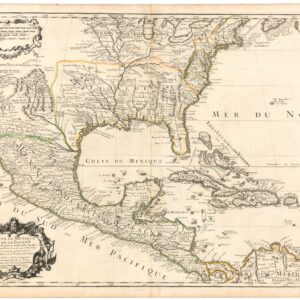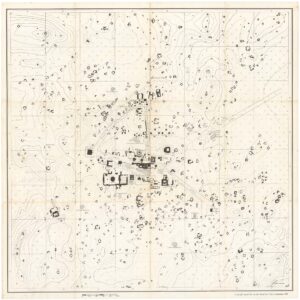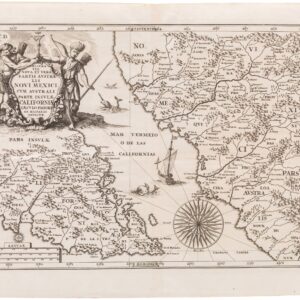The best coastal view of Peru in the early 19th century.
Spherical chart of part of the coast of Peru, from the Parallel of 7.° to 21.° 45.’ South Latititude; Surveyed and Drawn by Order of the King of Spain in the year 1790, By Officers of the Royal Navy.
$950
In stock
Description
In the early 19th century, William Faden, the famous English mapmaker and Royal Geographer to both George III and the Prince of Wales, was charged with reissuing a number of South American coastal charts that had been created for the Spanish Direccion Hidrografica in 1790. The surveys that these maps were based on had been conducted by the Royal Navy at the request of the Spanish King, linking them closer to British mapmaking traditions than Spanish ones.
In 1805, William Faden reprinted this set of detailed coastal charts. The Spherical Chart of Part of the Coast of Peru was among the reprinted sheets. This meticulously crafted nautical chart provides a factual and precise representation of the Pacific Coast of Peru. Being firmly anchored in the original Royal Navy surveys, this chart constitutes one of the best cartographic representations of the Peruvian coast at the time and an excellent navigational tool for anyone sealing on it.
While the King of Spain commissioned the surveys, the original publication of these charts can be attributed to the Spanish Direccion Hidrografica – an authoritative source adhering to the highest standards of cartographic accuracy – the chart is essentially the product of British efforts. Officers of the Royal Navy conducted the surveys, and the fine engraving work was done by Thomas Foot, a skilled artisan known for his attention to detail.
The chart covers the region between 7° and 21°.45’ South Latitude, meaning its scope ranges from the mouth of the Rio Zaña in the north (just south of Chiclayo, which is not included) to Mount Tarapaca in the north of modern Chile. Looking at the land itself, the chart shows relief representation through hachures, which are then complimented by detailed physiographic depictions of coastal profiles. In unison, these details gave mariners and others a pre-established visual understanding of the coastal terrain.
Along the coast, soundings are used to indicate depths, assisting sailors in navigating these potentially treacherous waters. The inclusion of the six coastal profiles further enhances the navigational utility of this chart, offering a detailed view of the coastline’s topography. In the waters along the coast, several journeys have been plotted. These represent the routes the original survey teams took that compiled the data behind this stunning map.
The reissued charts were published in London in 1805 by Faden himself. Their re-issuing demonstrates the value of good navigational resources in the early 19th century. This map was indeed an indispensable tool for sailors and explorers seeking to navigate the coastal waters of Peru.
Census
The current chart was published by William Faden in 1805 from his London office. It is one in a series of reprinted charts made by the Royal Navy for the Spanish King and initially printed by the Spanish Direccion Hidrografica.
The OCLC lists only two institutional copies of this scarce chart, the examples found in the libraries of Princeton and the University of Michigan (no. 77879427). We can find no examples of it on the open market.
Cartographer(s):
William Faden (1749 – 1836) stands out as one of the eminent English cartographers and map publishers of the late 18th and early 19th centuries.
Early in his career, Faden was mentored by Thomas Jefferys, a leading map engraver and publisher in London, who held the distinguished title of “Geographer to the King.” Upon Jefferys’ death in 1771, Faden inherited his business, and by 1783, his exceptional skills earned him the appointment as the royal geographer to King George III.
His cartographic prowess was particularly evident in his detailed maps of the British Isles and depictions of battles during the American Revolution. In addition to his cartographic ventures, Faden was a shrewd publisher, running a renowned map store in London. This establishment quickly became a nexus for geographers and explorers.
Condition Description
Very good. Centerfold reinforced at margin.
References



